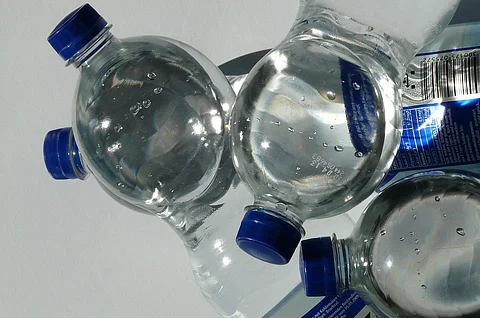

When one is traveling, especially in India, it is often assumed that buying bottled water is safer than getting water from taps marked for potable water.
However, a recent study shows that the belief is misplaced. Conducted by journalism organisation Orb media, the study, conducted at State University of New York in Fredonia, considered 259 bottles bought from different lots in 19 locations in nine countries, including India.
It found that 93% of the samples were contaminated with plastic particles. An average of 10.4 microplastic particles were found per litre of bottled water which was more than 100 μm (micrometre) in measurement. This is just over the mean breadth of a human hair.
If you included the smaller particles (6.5-100 μm), the average rose up to 325 microplastic particles per litre. The concentration ranged from 0 to 10,000 particles per litre. 95% of the contamination detected by researchers was made up of these smaller particles.
The brands considered by the study included Aquafina, Dasani, Evian, Nestle Pure Life, and San Pellegrino. They also included leading brands like Aqua (Indonesia), Bisleri (India), Epura (Mexico), Gerolsteiner (Germany), Minalba (Brazil), and Wahaha (China).
How does the contamination happen?
Researchers came to the conclusion that “contamination is at least partially coming from the packaging and/or the bottling process itself.”
The study found that the polymers found in the water (54%) matched the make of common plastic used to make the cap of the water bottles. Meanwhile, 4% of the particles showed presence of industrial lubricants.
Only 17 of the bottles surveyed (7%) had no contamination.
“Averaging across lots by brand, Nestle Pure Life and Gerolsteiner showed the highest average densities at 930 and 807 MPP/L, respectively, while San Pellegrino and Minalba showed the lowest microplastic contamination with 30.0 and 63.1 MPP/L, respectively,” the study says.
Interestingly, when the researchers studied samples of the same brand which came in glass bottles instead of plastic, there was considerably less plastic contamination in the water packaged in glass bottles. The source of the water was the same in both cases.
“This indicates that some of the microplastic contamination is likely coming from the water source, but a larger contribution might be originating from the packaging itself,” the study says.
Time to rethink plastic packaging?
The research was carried out as a follow-up to another one released in September 2017 which considered contamination in tap water.
“We found roughly twice as many plastic particles (>100 um) within bottled water as compared to tap water on average (10.4 vs. 5.45 particles/L). While fibers made of 97% of the microplastics within the tap water study, they only composed 13% of the particles within bottled water,” the study says.
“[…] the data seems to suggest that at least some of the plastic contamination may be coming from the industrial process of bottling the water itself. As polypropylene was the most common polymer found, the fragments could also be breaking off the cap, even entering the water through the simple act of opening the bottle,” it adds.
Sherri Mason, a chemistry professor at State University of New York in Fredonia, told BBC, that the idea behind the project was not to target certain brands. “It's really showing that this is everywhere, that plastic has become such a pervasive material in our society, and it’s pervading water - all of these products that we consume at a very basic level," she said.